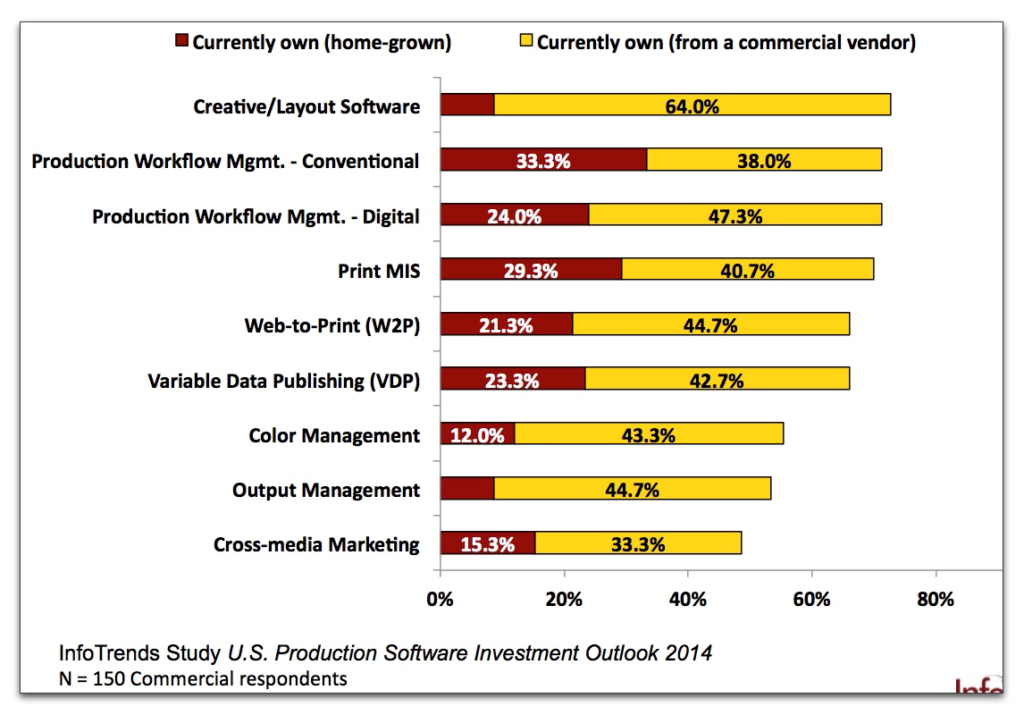Typically, research on software investments looks strictly at the number of companies using software and the number of companies considering purchasing software. But in the print industry, that does not tell the whole story because there are a number of companies that use homegrown solutions that they themselves build. In the 2014 InfoTrends U.S. Production Software Investment Outlook 2014, companies were also asked to specify if they bought software from a commercial vendor or if they used a homegrown solution that they built.
There are two questions we are asked when we talk about bought versus built software. The first is what are homegrown or built software solutions. The second question is why would any company build a solution as opposed to buying one.
The best example of homegrown tools are those used to fulfill features offered in Print MIS solutions. Today many companies use spreadsheets for estimating, scheduling, and billing. This functionality can be considered features in Print MIS as well as production workflow software. That is why the response rates for home grown solutions such as conventional production workflows (33%), print MIS (29%) and digital production workflows (24%) are high.

Cost-Benefit Ratio: Homegrown vs. Commercial Print Workflows
The idea that 25% to 33% of production workflows are home grown is consistent with what we see in our production audits. Homegrown workflows typically automate one step within a larger process. For example, the first step in prepress might be preflight which can be automated with software tools such as Acrobat or Pitstop. The second step might include color correction for imposition which can be automated using color profiles for imposition templates.
In these homegrown solutions, individual steps are automated, something which we often refer to as ‘Islands of Automation’. Each step is automated but manual intervention is required to move from one island of automation to the next. In other words, there is no integration across the Islands of Automation. The advantage of homegrown software is that it’s cheaper than buying software and it automates one step in a multi-step process.
The main advantage of buying software is that it often helps integrate and automate a series of steps. For example, a good workflow solution today includes the ability to order and design online (web to print), fulfill certain prepress production steps (PDF workflow) and bill automatically (web to print / print MIS).
One question we are often asked is how a company should decide if it’s worthwhile for them to invest in integrating their workflow. Theoretically the answer is very simple. It all comes down to your productivity and manufacturing costs. If you can maintain high productivity and low manufacturing costs with the homegrown solutions, there is little motivation to buy an integrated solution. In contrast, if your productivity is low and your manufacturing costs are high, you have to increase your productivity.
If you’re wondering about the advantages of an integrated workflow you should start by comparing your productivity and manufacturing costs to leading companies.



